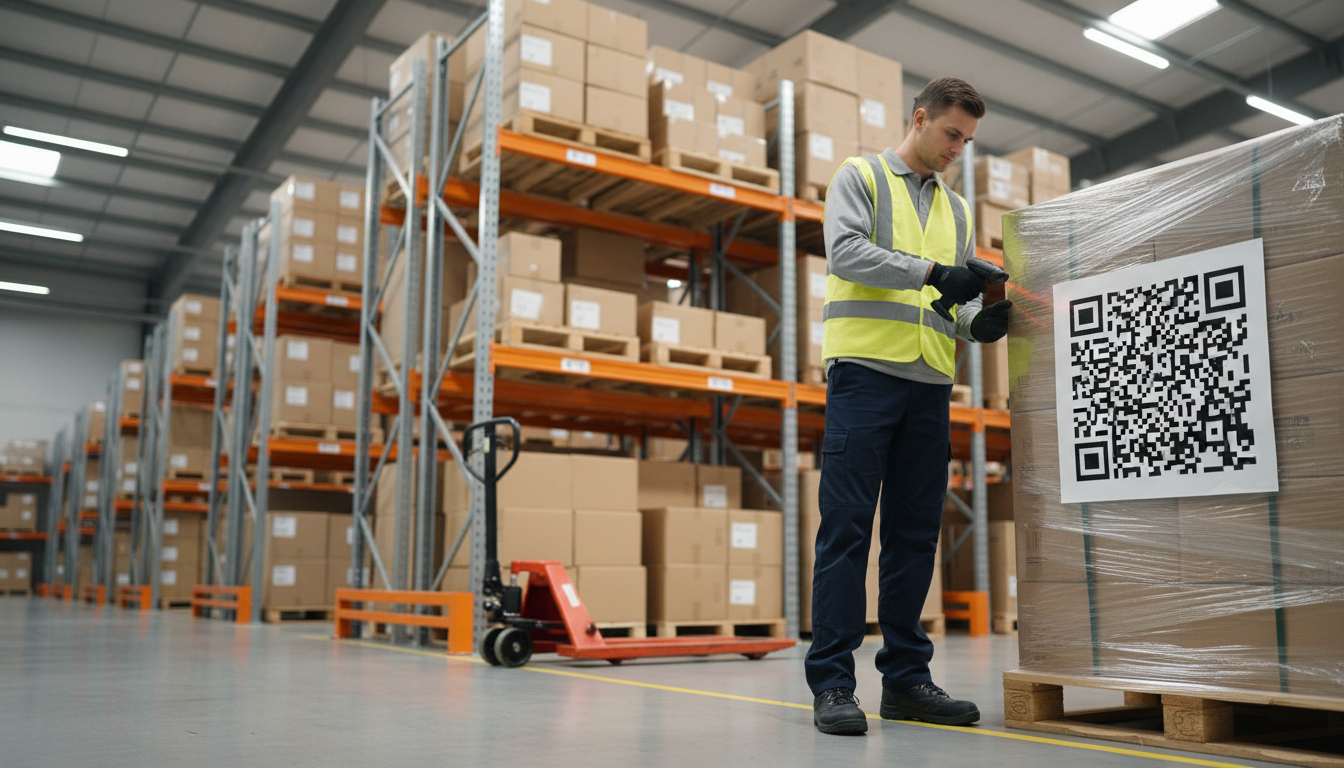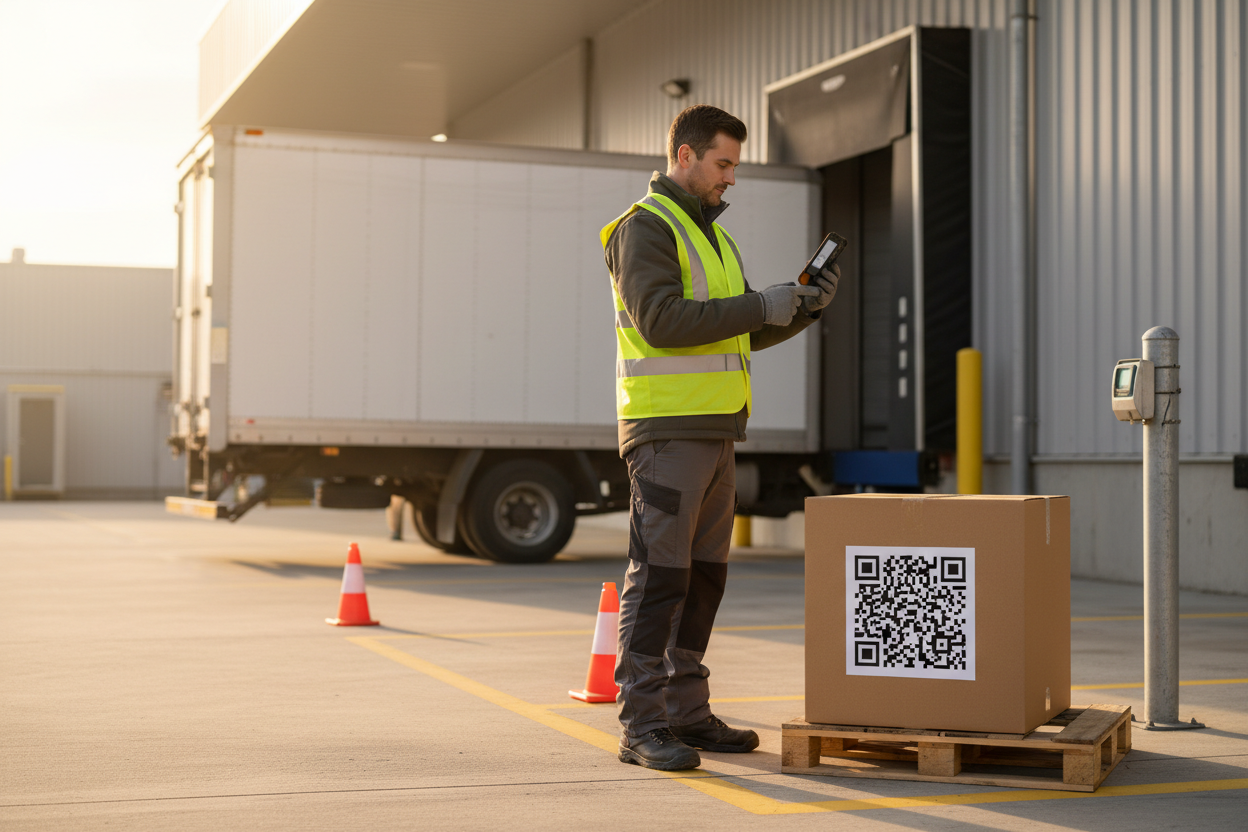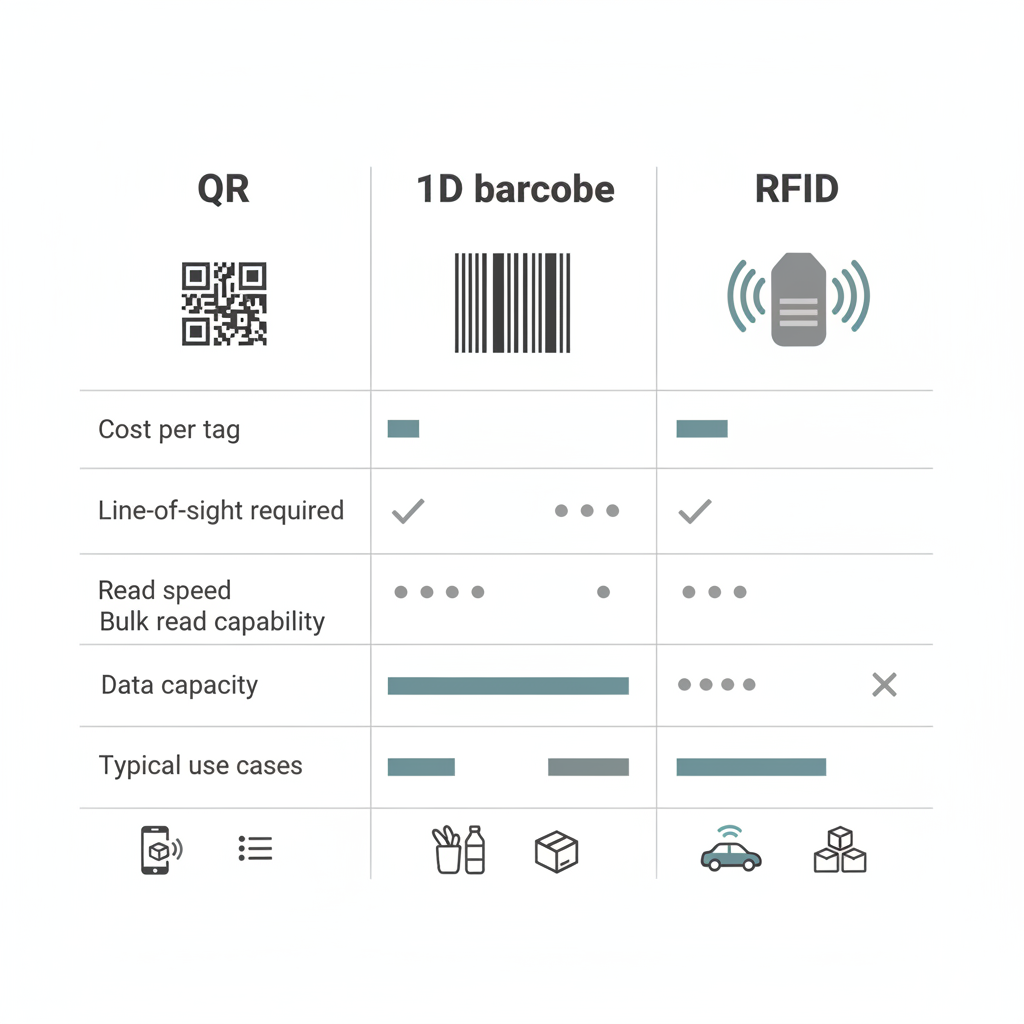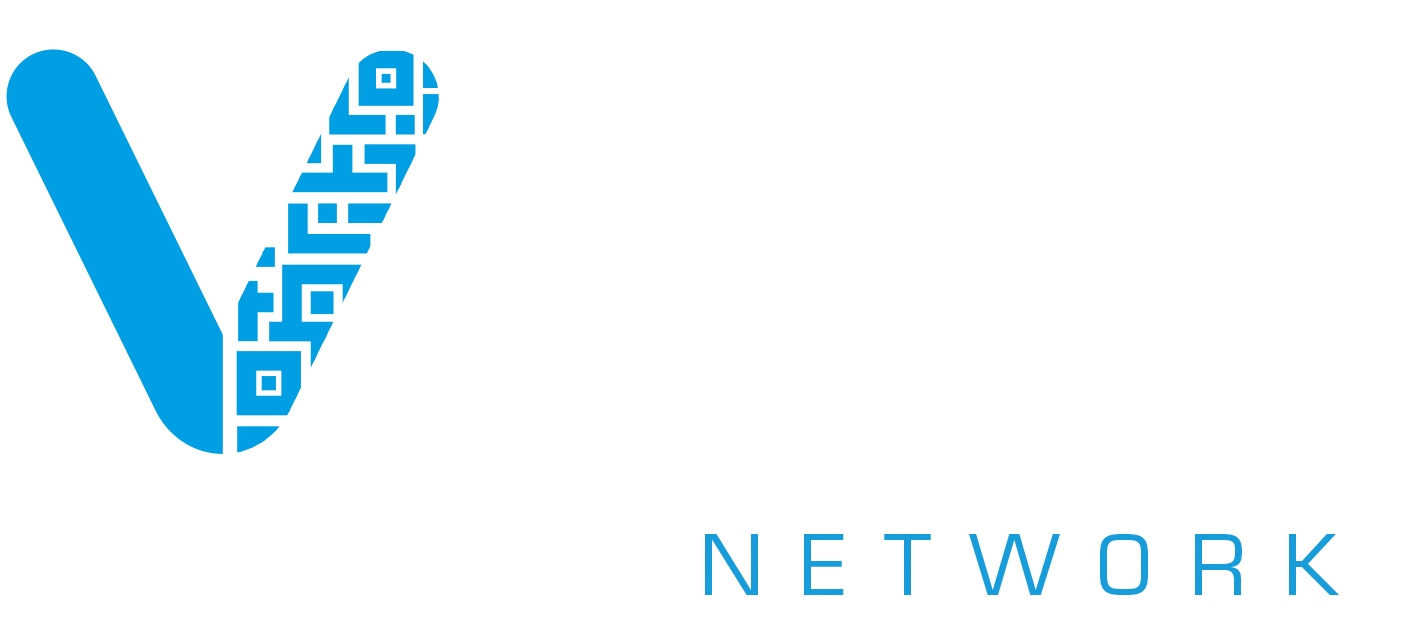Transform Your Supply Chain with Smart QR Tracking
VISU turns every scan into real-time logistics visibility, automation, and measurable savings.
Why QR Codes Are Game-Changers in Logistics
Traditional logistics systems often rely on barcodes, manual data entry, or RFID tags. These approaches can be costly, complex, or prone to errors. QR codes, by contrast, are low-cost, easy to generate, and scannable with any smartphone or dedicated device. They connect physical assets directly to digital platforms, enabling:- Real-time tracking of shipments and parcels
- Error reduction by eliminating manual input
- Transparency for customers and partners
- Cost savings compared to RFID or proprietary systems

Key Use Cases Across the Supply Chain
1. Warehouse Management
- QR labels on pallets, shelves, and products accelerate picking and packing.
- Workers scan to confirm inventory instantly.
- Systems update automatically, avoiding discrepancies.
2. In-Transit Visibility
- QR stickers on containers or packages enable updates at every checkpoint.
- Customers scan codes for real-time tracking.
- Managers gain transparency into delays and route efficiency.

3. Last-Mile Delivery
- Agents scan codes to confirm drop-offs.
- Customers verify authenticity or sign digitally.
- Returns become easier—scan to generate a label.
4. Reverse Logistics
- QR codes streamline returns and recycling.
- Brands track warranty claims and sustainability programs.
Design and Implementation Best Practices
- Code durability: Lamination or UV/abrasion-resistant materials.
- Placement: Flat, visible, scannable surfaces.
- Integration: Events synced to ERP/WMS/TMS.
- Dynamic codes: Update metadata without reprints.
- Security: Signed/tokenized URLs + authentication.
- Redundancy: Human-readable ID + fallback short URL.
- Standardization: Label templates + scanning SOPs.
Quick Comparison: QR vs. 1D Barcodes vs. RFID

| Criteria | QR Codes | 1D Barcodes | RFID |
|---|---|---|---|
| Cost per tag | Very low | Very low | Medium–high |
| Read range | 0.5–2 m | 0.3–1 m | Up to 10+ m |
| Line-of-sight | Yes | Yes | No |
| Read speed | Single/limited | Single | Bulk reads |
| Bulk read | Limited | Limited | Excellent |
| Data capacity | High | Low | Low–moderate |
| Durability | Good | Good | Excellent |
| Infrastructure | Smartphones | Scanners | Readers + antennas |
| Typical uses | Tracking, returns | SKU/POS | Pallets, cages |
Short Implementation Checklist
(Kept exactly as your original, only spacing improved)- Strategy and scope
- Define objectives (error reduction, visibility, CX).
- Select assets (SKUs, pallets, vehicles).
- Data model and IDs
- Static vs dynamic; signed URL + GUID.
- Uniqueness, versioning, fallback ID.
- Label specs
- Size, quiet zone, contrast, materials.
- Systems integration
- ERP/WMS/TMS APIs + event taxonomy.
- Devices and apps
- Scanner requirements + offline queue.
- Security and compliance
- Tokenized links, RBAC, anti-counterfeit.
- Pilot and rollout
- Baseline KPIs + SOPs.
- Monitoring and ROI
- Scan success, disputes, NPS, cost per shipment.
- Continuous improvement
- Refresh labels; A/B test size/placement.
- Future-ready
- IoT, blockchain, AI/ML, vision systems.
Customer-Centric Logistics
Beyond internal efficiency, QR codes enhance the customer experience:- Scan shows delivery status, ETA, and support options.
- After delivery, link to surveys or loyalty rewards.
- Transparent tracking reduces support tickets.
Measurement and ROI
To measure impact, companies monitor:- Error reduction (mis-picks, wrong deliveries)
- Time saved per scan
- First-attempt delivery rate
- Customer satisfaction uplift
- Operational savings
- Data quality and event completeness
The Future of QR in Logistics
- IoT sensors for condition monitoring
- Blockchain for custody records
- AI/ML for route/labor optimization
- Vision systems for auto-detection scanning
Ready to Upgrade Your Logistics?
VISU turns supply chains into connected, trackable, automated ecosystems.
FAQ: Logistics QR Codes
Are QR codes durable enough for warehouses?
Yes — laminated, UV-resistant or abrasion-resistant QR labels withstand dust, friction, moisture and long-term industrial use on pallets, totes and racks.
Do QR codes replace RFID?
Not exactly. QR is ideal for low-cost tracking, workflows with human interaction and customer-facing experiences. RFID excels in automated bulk reads at gates and conveyors. Many operations use both.
Can drivers update delivery status using QR codes?
Yes. Drivers scan the QR at departure, checkpoints and delivery so each event is instantly recorded in the TMS/WMS, improving real-time visibility and proof of delivery.
Can customers track their package by scanning?
Absolutely. A single scan can open a branded tracking page with status, ETA, instructions, return options and support channels, reducing calls to customer service.
Do QR codes work with existing phones and scanners?
Yes. Most smartphones and many modern scanners read QR codes natively, so you can start with current devices and upgrade hardware gradually if needed.


